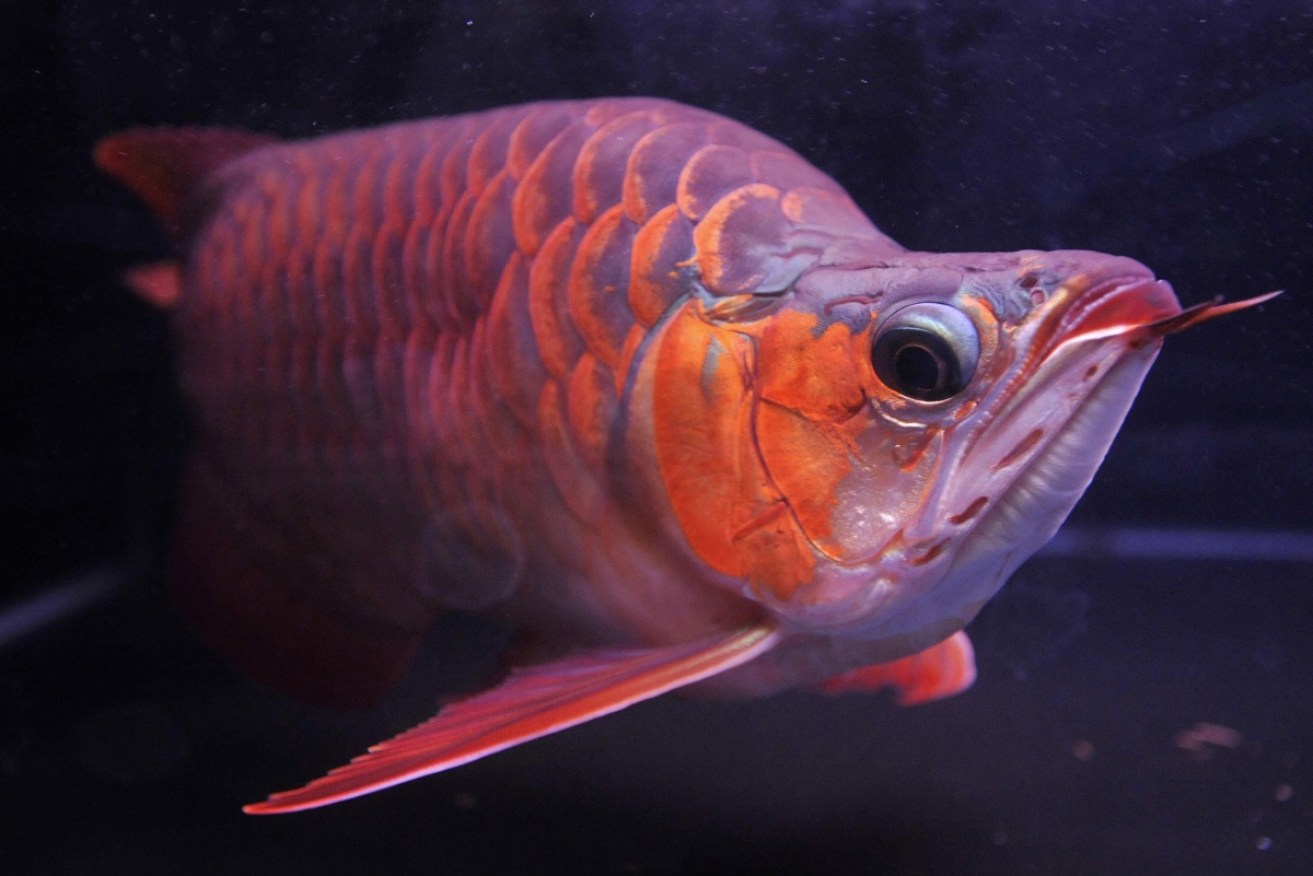The fish people are willing to commit murder for

There's a black market for the coveted arowana fish operating in Australia. Photo: Getty
The human obsession with a red “dragon fish” that can cost as much as a Ferrari has fuelled a shadowy black market and pushed the species to the brink of extinction, an adventurous new book reveals.
The Asian arowana is the world’s most expensive aquarium fish you have never heard of – selling for as much as $US300,000.
It looks like a giant goldfish, with facial barbs and coin-like metallic scales, and because of its resemblance to a Chinese New Year dragon is thought to bring prosperity and luck in Asian cultures.
Although the prehistoric species can be legally farmed in Asian countries – often protected behind razor wire – it is almost extinct in the wild, making it the most highly prized aquarium fish.
New York journalist Emily Voigt investigated and pursued the arowana for years – travelling to 15 countries – to uncover the truth behind murky stories of dangerous fish mafia and the black market and discovered that people have literally killed to get their hands on the coveted fish.
Her book, The Dragon Behind the Glass: A True Story of Power, Obsession and the World’s Most Coveted Fish, opens with the shocking murder of a young man in Malaysia for his prized freshwater specimen.
“The reason I started the book there is because to me it just showed how high the stakes were with this fish – how insanely valuable it had become that people would value it more highly than a human life,” Ms Voigt told The New Daily.
“It has become a status symbol…often likened to car collecting.
“It’s the super red, the Ferrari of fishes and it’s very much about showing up your neighbour with a more expensive variety.”
The most highly sought colours and species can sell for hundreds of thousands of dollars, according to Ms Voigt, such as $US150,000 paid by a Taiwan plastics mogul and US$300,000 by a Chinese Communist Party official.
Paranoid fish owners also go to lengths to protect their arowanas and Ms Voigt recounts how 10 albino arowanas were transported with a police motorcade and armed guards to an international fish competition.
“It’s so crazy. You have to understand that it’s just this incredibly paranoid world,” she says.
“I became paranoid when I was reporting on this – very much so.
“There are definitely some kind of darker forces at play with this fish – you have a shadowy underworld of gangs and fish mafia.”
While researching its history, Ms Voigt discovered that it wasn’t the cultural value of the arowana that may have contributed to the dangerous fetishising but, paradoxically, well-meaning attempts to protect it.
The arowana was listed as an endangered species by the Convention on International Trade in Endangered Species (CITES) in 1975 but Ms Voigt believes the protected status gave the species a “sheen of limited edition” and ignited a desire to own one.
In the 1980s and 1990s, CITES then encouraged sustainable trade of some protected animals which enabled commercial farming of arowana, sparking a new “mania” for the fish.
“Now they’re bred by the hundreds of thousands,” says Emily.
“It’s a mass-produced endangered species.”

Ms Voigt believes classifying the arowana as “endangered” only served to heighten its appeal. Photo: Getty
In countries where the fish are banned such as the USA and Australia – it’s illegal in Australia for quarantine reasons – Ms Voigt says a black market operates.
Australian cases have been prosecuted of attempts to smuggle live species through customs in water-filled bags under clothing or in luggage, such as last year when Kuok Weai Alex Chang was arrested trying to import 176 live arowana into Australia.
Memorably, fanatic Sharon Naismith was caught with bags of fish under her skirt at Melbourne’s airport in 2007 after officers noted a swishing sound under her clothing.
 As Ms Voigt delved deeper into the fish world she says she also found herself becoming almost as obsessed as the aquarium lovers.
As Ms Voigt delved deeper into the fish world she says she also found herself becoming almost as obsessed as the aquarium lovers.
It became her mission to see an arowana in its natural habitat and that quest took her into the wilds of such places as Borneo and the Amazon.
“I was not a fish person before I ventured into this and I didn’t find this fish particularly beautiful,” she reflects.
“But I think there was something deeper also going on – I was looking for the wild.
“I was in my 20s and worked in New York my whole adult life and I think there was just some part of me that wanted to find the wild place and the fish very much represented that.”








